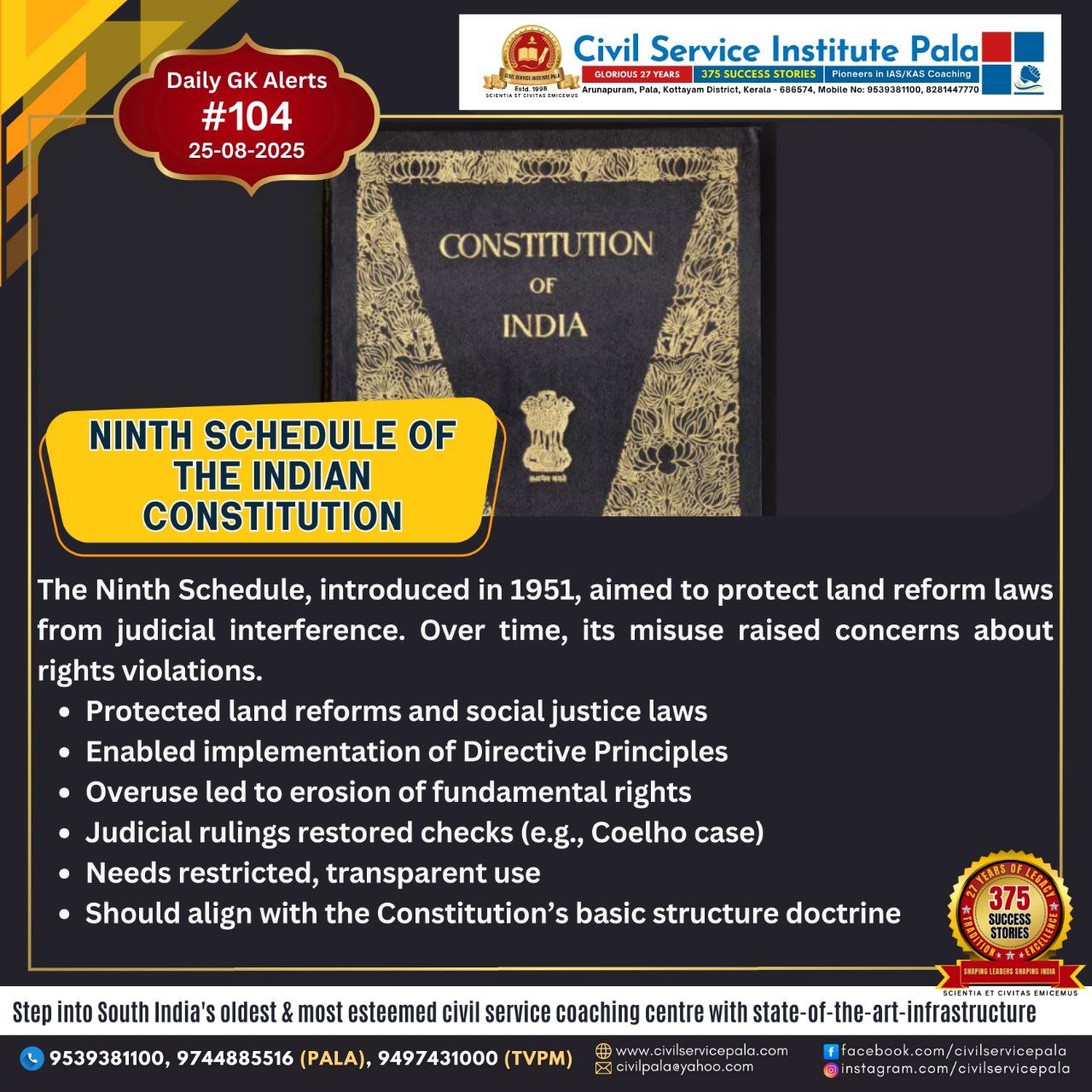
Ninth Schedule of the Indian Constitution
The Ninth Schedule of the Indian Constitution was introduced by the First Amendment Act in 1951. It was designed to protect land reform and other socio-economic laws from being struck down by the judiciary for violating fundamental rights. Over time, however, its use has raised concerns about misuse, judicial independence, and the balance between social justice and constitutional rights.
Background and Evolution
The idea of the Ninth Schedule was proposed by V.K. Thiruvenkatachari, then Advocate General of Madras. In the early 1950s, zamindars challenged land reform laws in court, especially after the Patna High Court struck down the Bihar Land Reforms Act in 1951 for violating the right to property.
To resolve this, the government introduced:
* Article 31A to protect agrarian reform laws.
* Article 31B and the Ninth Schedule to provide complete immunity to laws listed in it from judicial scrutiny.
Initially, 13 laws were added—mainly land reform acts—but the number has now grown to over 280.
*Judicial Response and Key Cases*
* Shankari Prasad (1951): SC upheld the Ninth Schedule’s validity.
* Golaknath (1967): Parliament cannot amend Fundamental Rights—casting doubts.
* Kesavananda Bharati (1973): Introduced the Basic Structure Doctrine—Parliament cannot destroy the Constitution’s core.
* Waman Rao (1981): Laws added after 24 April 1973 can be reviewed.
* I.R. Coelho (2007): Laws violating Articles 14, 19, and 21 or the basic structure can be struck down even if in the Ninth Schedule.
Positive Aspects
1. Agrarian Reforms: Helped abolish zamindari and redistributed land to poor farmers.
2. Social Justice: Protected laws on reservations and tenancy rights.
3. Reduced Litigation: Gave policy stability during the reform phase.
4. Enabled Directive Principles: Supported goals under Articles 38, 39(b), and 39(c) like reducing inequality.
5. Flexibility in Governance: Allowed Parliament to implement tough reforms without immediate legal hurdles.
Challenges and Criticism
1. Legislative Overreach: Laws unrelated to land reforms were added for political reasons.
2. Violation of Rights: Laws in the Ninth Schedule bypass scrutiny under Articles 14, 19, and 21, undermining basic rights.
3. Judiciary–Legislature Conflict: Led to tension, especially after the Coelho judgment.
4. Misuse for Political Gains: For example, Tamil Nadu’s 69% reservation law was shielded by placing it in the Schedule.
5. Lack of Transparency: No clear criteria for what laws qualify for inclusion.
Way Forward
* Restrict Use: Limit it to genuine social justice or agrarian reforms.
* Judicial Review: Ensure all laws respect the basic structure doctrine.
* Transparent Process: Clearly explain why a law is added to the Schedule.
* Time-bound Protection: Include sunset clauses or periodic reviews.
* Balanced Governance: The legislature should promote social goals, while the judiciary ensures protection of constitutional values.
The Ninth Schedule was a visionary tool created to support land and social reforms in newly independent India. While it played a key role in reducing inequality, its unchecked use risks eroding fundamental rights and constitutional balance. Going forward, its application must be limited, transparent, and aligned with the Constitution’s basic structure to truly serve the goals of justice and democracy.



